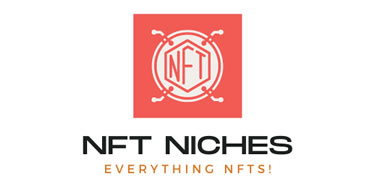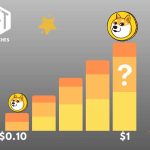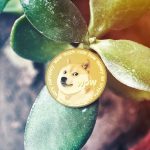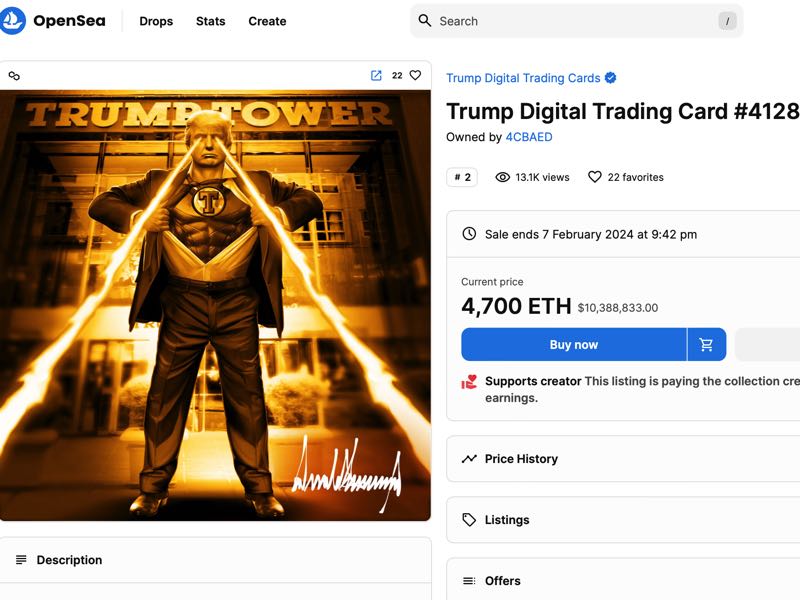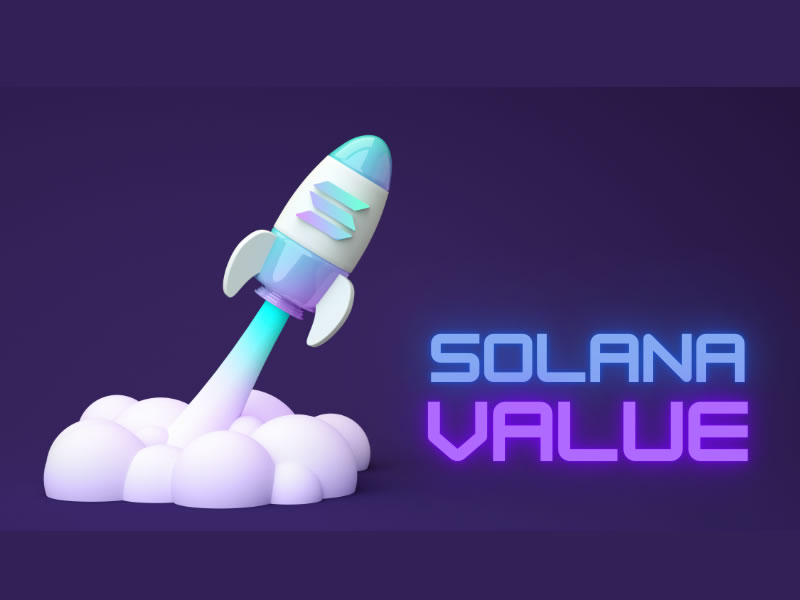NFTs have claimed much spotlight recently with stories and case studies of everyday people becoming millionaires overnight with NFTs.
Whether buying a rare Bored Ape Yacht Club or Crypto Punk NFT on first launch, or launching your own NFT collection, NFTs and Cryptocurrency have seen more people become millionaires faster than any other investment vehicle in history.
Since the launch of the first and most popular NFT collections, thousands of speculative investors came flocking to the NFT industry in search of NFT gold, not too dissimilar to the Klondike Gold Rush of the 1890s.
Unfortunately, like the Klondike Gold Rush, the majority of people walked away with nothing and those who were making the most on average were selling the pickaxes on the trail up the Klondike Mountain.
Despite this, it is still possible today to walk away a millionaire from a lucrative NFT investment or creative marketing strategy.
What are NFTs
NFT stands for Non-Fungible Token.
A Non-Fungible Token means an item or asset that cannot be replicated. An NFT resides on the blockchain in a secure environment by way of hashtag, that can not be edited, altered, cloned, or stolen. The blockchain security is absolute. The token relates to a real world item such as art or utility.
In other words, when an NFT is created the buyer and sellers details (digital wallet) are recorded on to the blockchain forever more.
The blockchain works by a series of interconnecting hashtags. These hashtags create a binding of data that means changing data on a block means changing the hashtag, and a change of hashtag would no longer complete the sequence causing major alarm bells in the blockchain system.
This ultra-secure digital system ensures the legitimacy of any NFT by way of full complete audit system.
In the art world rare expensive pieces are forged all the time, and dealers pay expensive experts to prove the piece is genuine and provide a provenance.
For NFTs this is not needed. The secure audit trail of all transactions in the blockchain of an NFT from creation and every update and trade ensures a full proof way of verifying any piece.
How Can an NFT Return an Income
All the details above look incredibly complicated.
It is all very technical, although understanding how it all works isn’t needed to make an income from NFTs.
No-one needs to be a car mechanic in order to sell a car.
NFTs can have value depending on the demand for the artwork or NFT collection.
For NFT collections in demand, the rarer the NFT the more valuable can be.
The secret to making money through NFTs is to find in demand collections where demand is higher than supply.
It sounds easy enough but can be an incredibly time consuming and frustrating process.
In the early days, NFT launches were rare.
NFT collections launched on average once a month to a fanfare of hype, marketing drive and incredible demand all wanting to get their hands and own part of the collection.
Today, hundreds of NFT collections can launch in a week.
There simply are not enough people buying NFTs compared to the number being launched.
Only the very popular collections from established artists, large brands or collections providing great utility or good reason to invest.
With the number of scams and rug-pulls these good collections are becoming more difficult to find.
If an average NFT collection launches with 4,000 individual NFTs and 60 collections launched in a week, this equals 240,000 new NFTs to launch in 7 days.
Nearly one million new NFTs per month.
There aren’t this many buyers.
From the 250 NFT launches per month there may be one or two worth following and could yield a return on investment.
Finding these one or two NFT launches per month is the key to making a return income through NFT trading.
Becoming a Millionaire through NFTs

The easiest way to become a millionaire through NFTs is to launch and sell out an NFT collection. This requires artwork, a smart contract deployed on to a blockchain, a reason for people to want to invest and incredible creative and marketing skills.
Many investors hire a team of creative individuals to help launch successful collections.
An NFT is priced in the cryptocurrency of the blockchain the smart contract will be deployed to.
The cost of an NFT is around $100-$200, and have reduced considerably in price as supply dramatically increased.
If an NFT creator launched a 10,000 NFT collection at $200 an NFT, and the collection sold out, the creators would walk away with $2,000,000 overnight, and become a millionaire.
With 250 NFT collections launching per month, the creator needs a great marketing campaign, brand, reason for people to want to buy in, create hype and gain attention in order to stand out from the rest of the crowd and launches.
The general path to launching an NFT collection is to create a Twitter account, Discord channel, create hype through exclusivity and status, drive demand and hire or recruit a team of Discord moderators to help produce content.
This is how NFT creators drive up enough demand to sell 10,000 NFTs in their collection.
There always must though be a reason for NFT traders to want to buy in to the collection, which is often because there is a belief the NFTs will be in more demand in future, and worth more.
Some creators launch with some snazzy artwork and a promise of a game or business that will be created using the proceeds of the sale.
Other creators provide utility, or exclusive value of some description, that people want to be able to use and worth more to the user than the value of the NFT.
It isn’t possible under NFT and investment regulations to provide a share of a business as an NFT collection.
So, a startup couldn’t launch with 4,000 NFTs with each NFT providing 1/4000 ownership of the business which could increase overtime as an investment.
A startup though could launch with 4,000 NFTs and each NFT providing exclusive content, products, limited edition items or promotional products in exchange for owning an NFT and helping the company launch.
Creating an NFT collection isn’t the only way to become an NFT millionaire, but it is the easiest.
Although not necessarily easy.
Another way of becoming an NFT millionaire through NFT is to smart trade.
This means buying and selling NFTs in the right collections, at the right time for the right amount.
Many expert and successful NFT traders use software to provide real time data and stats at the moment such an NFT hits the market.
The software is of course expensive, and trade success is never guaranteed, but those who spend time understand the market, system, trends and the software can build up a serious income over a period of a few years.
This could exceed a million dollars.
Which NFTs are Best to Buy for Maximum Returns
He world of NFTs can be a huge learning curve for those new to the industry.
Every NFT looks like a potential goldmine, and self-hyped Discord channels and Twitter posts look appealing.
Unfortunately, 98% of all NFT collections will fail (although my guess is closer to 99.5% will fail).
Finding those rare NFT collection gems is difficult but there are some signs I have come to trust and recognise over the three years I have been trading in NFTs.
Here are some of those ways to spot good NFTs that are best to buy for maximum returns:
Best NFTs to Buy at Launch
Prior to an NFT collection’s launch, it is almost impossible to determine which way the market will go.
It may be very popular with lots of Twitter likes and a healthy number of Discord followers.
Although the key is in the detail.
There are red flags to spot.
Twitter followers and Discord members are easy to buy from various gig provider sites. Therefore, the volume doesn’t always mean real people.
One way to really determine popularity is the number of likes, shares and retweets on Twitter, and the activity on Discord.
If an NFT Collection’s Twitter account has 35,000 members, yet each tweet has just a handful of likes, then either the demand disappeared already or the apparent demand is false.
Similarly, a Discord channel with 20,000 members, yet all channels in their Discord chat are empty or full or random ‘let’s go’ or ‘to the moon’ posts with no conversations, no proper community or discussions taking place – this is also a red flag.
Engaged communities are a good sign.
Demand for an NFT collection is the only way a collection will sell out, and the value of the NFT will increase over time.
Best NFTs to Buy after Launch
Once an NFT collection launch has launched it’s then easier to spot the good from the bad.
NFTs that didn’t sell out often find it very difficult to recover from.
Those NFT collections that did sell out will probably start seeing a number put up for sale quickly at higher prices, particularly the rarer items in the collection.
Many NFT traders are looking for NFTs that they can either quickly flip, which means buy low and sell high for a quick profit.
They do this by spotting trending collections that they feel will continue to rise in value, and search for NFT sellers who have undervalued their NFTs based on the selling price of a similar type – or similar rarity – NFT.
Other NFT traders look longer term, and base their investment on the roadmap often put out by NFT creators to show how they plan to provide value for NFT holders over a longer period of time.
Long term NFT holders are out there, but many make their money by short term NFT trading and flipping spotting bargains and relisting almost immediately at a more realistic selling price.
Doing this by hand is a challenge.
Too many NFTs, too many trades and too much data are often too much of a manual challenge.
Fortunately there are NFT tools and software on the market that gather all this data, and display to you NFTs for sale in real time based on conditions chosen.
A trader may like a handful of collections, and then define a set of rules to be alerted when an NFT is listed for sale in that collection that may see it being sold under value.
The trader can then quickly buy the NFT before anyone else notices, and then relist.
Some NFT tools handle all this automatically and even complete the trade.
The best launched NFTs to buy to return a profit are rare items in the collection, in the top 1%, trading anywhere close to the floor price or within 20% of the floor price.
This is not an absolute calculation but a good rule of thumb.
NFT Millionaire Case Studies
There have been a number of millionaires through the creation of NFTs.
Some because of a scam or rug-pull and others by way of an NFT Collection that went viral.
Here are three NFT creators who became millionaires after their collections launched:
John Watkinson and Matt Hall
Although these names may not be familiar to you, John Watkinson and Matt Hall from Larva Labs created the first 10,000 piece NFT collection called Crypto Punks.
They originally gave away the entire 10,000 NFT collection for free, but like almost all NFT collections there is an ongoing royalty paid to the developers for every single trade.
So, if for example all 10,000 NFTs were resold 3 times each, for an average of $100,000 and the royalty was 7.5%, it means the developers would be paid $225 million in royalties alone!
Although public records are scarce, it is thought the duo are worth around $500million to $1 billion.
Greg Solano, Wylie Aronow, Zeshan Ali and Karem Atalay

These four fortunate developers created arguably the most exclusive and popular NFT collection of all time so far, the Bored Ape Yacht Club.
It became so exclusive that celebrities started buying in to the collection and adding their NFT on to their profile.
Bored Ape Yacht Club offered no utility other than status and exclusivity of owning one, yet some NFTs traded hands for upwards of $500,000.
The founders became millionaires many times over.
Truth Labs
There was so much mystery and anticipation behind one of the most secretive NFTs launches to date.
Tweets were full of random goblin garble.
Discord channels were impossible to get in to because of demand.
Even the weekly voice update provided nothing by 3 hours of goblin speaking randomness that made no sense.
In hindsight this was marketing genius.
Goblin Town, whose name is in reference to the Goblin Town featured in The Hobbit books and film, was finally exposed as a collection launched by Truth Labs, who had launched successful NFT collections prior.
The popularity saw NFTs trading hands for five figures each at one point.
With all earnings coming from royalties on the secondary market after all NFTs were given away for free, it mean Truth Labs collected over a million dollars.
